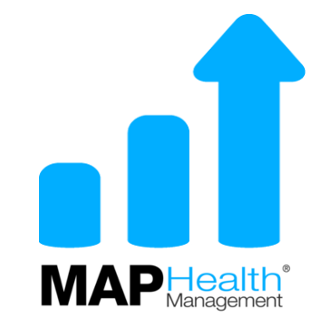Addiction Treatment: The Past, The Present, and The Future
February 29, 2016 Jacob Levenson
As published on February 28, 2016 on The Doctor Weighs In by Jacob Levenson.

In 1935, two men, one a New York stockbroker, the other an Ohio surgeon, and both alcoholics, met and discussed their battles with addiction. From that meeting a spark was ignited and Alcoholics Anonymous (AA) began. That same year aversive conditioning sanatoriums opened to treat individuals suffering from addiction and the beginning of federal involvement in addiction research and addiction treatment began. As we consider the past, present and future of addiction treatment we can appreciate how far the field has come and understand how far it has to go.
The Past
America has a long history of treating addiction as a moral failing, believing it to be a weakness of character rather than an illness of the brain. Despite an early assertion in 1935 by Bill W. (the New York stockbroker and founder of AA), that addiction was a malady of mind, emotion and body, the collective response to treating addiction tended toward punitive measures as a method to correct bad behavior. As addiction began to be further understood and treated as an illness, the model of treatment mirrored other illness treatments with a standard vertical methodology a one directional hierarchy of care that began with a diagnosis from a physician and a subsequent directive of treatment. Recovery support was a notion that meant attending support groups or abstinence-based meetings rather than a professionally structured system of care.
The Present
According to a recent Omnibus poll, 72% of Americans see addiction as a disease to be treated as a health issue and not with punishment or punitive measures. Well-respected organizations such as the American Society of Addiction Medicine (ASAM) and the Substance Abuse and Mental Health Service Administration (SAMHSA), define addiction as a chronic disease of the brain that requires treatment. It is understood by addiction treatment providers that a symptom of the disease of addiction is relapse, also known as a return to lifestyle, and behavioral issues are to be expected with the brain-altering illness.
With the advancements in understanding as to how the disease affects the brain, the standard medical, or vertical, model of treatment is beginning to be replaced with the more progressive behavioral health, or horizontal, model of treatment. This horizontal approach is by definition, more inclusive and multi-directional in its scope. Rather than a general diagnosis resulting in the same treatment regimen, a diagnosis is met with an open dialog that considers the specific disease state, socio-economic status and a wide range of other factors effecting disease management.
Post-treatment recovery support is no longer viewed as a pleasant notion for an addict to pursue but rather a substantiated professional service recognized and proven to be a significant element in successfully achieving and maintaining long-term recovery.
While addiction treatment today is a vast improvement from its beginning, there is much progress to be made. When comparing the treatment of addiction to other chronic illnesses we see a marked difference. The relative lack of outcomes data is one pronounced difference. For example, when an individual is diagnosed with cancer, the patient and physician have empirical data (treatment success rates) to rely upon in order to determine the best treatment path. An individual diagnosed with addiction however, has not historically had similar outcomes data in which to base a treatment decision. This results in a tri-fold quagmire: (1) Patients and physicians do not have solid treatment success rates in which to base their decision as to the best-suited treatment for their illness, (2) Health insurance payers do not have the predictability of treatment success as they are accustomed in other forms of chronic disease management and, (3) addiction treatment providers experience an uncertainty in their revenue streams when a provider is unable to demonstrate their success rates, they cannot distinguish themselves or their quality and effectiveness of treatment.
The pendulum has begun to swing and the public, medical community and, in some cases, the correctional system, has accepted that addiction is a disease which results in sick individuals, not necessarily bad individuals. Interestingly, because our healthcare system has evolved to the expectations of demonstrated success rates, a new brand of addiction treatment has begun to elicit attention, resources and most recently, significant funding. Medical Assisted Treatment (MAT) is the provision of medical therapy (pharmaceuticals) in conjunction with behavioral therapy (counseling and recovery support) to individuals working to overcome addiction. This newly evolving form of treatment, despite its recent arrival to the field of behavioral health, has begun to demonstrate an advantage over traditional, abstinence-based treatments. MAT providers have, from the onset, measured and tracked their rates of treatment success which appeals to payers and consumers. While still in its relative infancy, this form of addiction treatment has recently gained the attention of the Obama Administration in the form of a $1.1 billion initiative to combat the addiction epidemic currently ravaging the nation. Clearly, the message from Washington that high quality treatment is synonymous with MAT and tracking success rates.
The Future
We will see MAT leave an impression on the field and it has yet to be discovered how successful this form of addiction treatment will be. What we know without question is that providers who collect long-term outcomes data to measure and demonstrate their rates of success will distinguish themselves in the field. In the future only those providers who embrace this practice will see their operations blossom into thriving, predictive models of care wherein payers reimburse for treatment, the standard in every other form of chronic disease management.
Recovery support will evolve to a telehealth provision. This vital post-treatment support, by way of audio-visual technology, will be provided to every patient who completes treatment. Because telehealth is not limited to state lines or boundaries, providers will effectively maintain a connection with their discharged patients and be reimbursed for post-treatment services they provide. We will see providers with telehealth divisions that demonstrate their long-term recovery success rates and recidivism rates will decline. Consumers will make informed decisions as to the best suited treatment for their particular illness based on empirical data.
The future will consist of addiction treatment based on a horizontal model of treatment, one which maximizes the continuum of care. Value-based, pay-for-performance contracting between provider and payer will be standard. Ultimately, due to the expansive and limitless capabilities of telehealth, providers will reach more individuals, the addiction epidemic will begin to decline and millions of Americans effected by this chronic disease will begin to see relief.
Since the 1970's, cancer survival rates in our country have doubled. The field of addiction treatment is beginning to experience a similar phenomenon. For providers willing to embrace advancements in technology and outcomes data collection, the future will consist of the successful dismantling of addiction.
And addiction? In the future, it will no longer be an epidemic.

Jacob Levenson founded Austin-based MAP Health Management, LLC in 2011 and has served as Chief Executive Officer since its inception. MAP is a provider of comprehensive outcome data, aftercare programs and revenue cycle management to addiction treatment providers across the country. Levenson passionately architects and deploys data-based solutions and healthcare services that empower patients by mitigating potential relapse, increasing predictability for insurance payers and overall outcomes for treatment providers.








